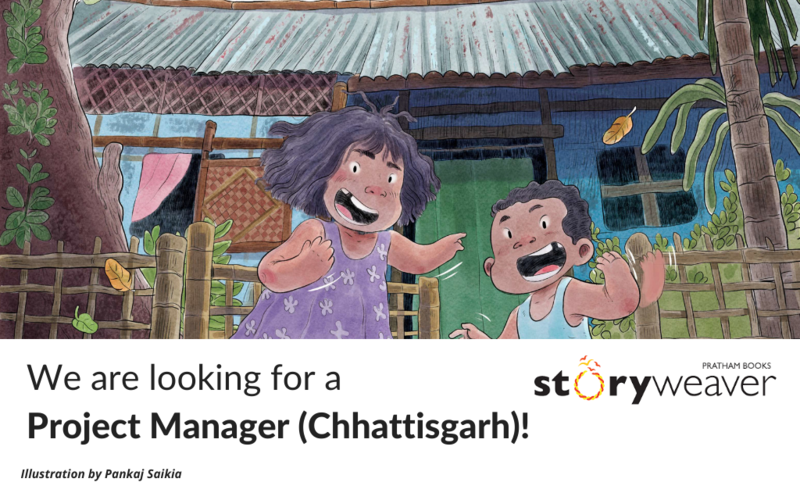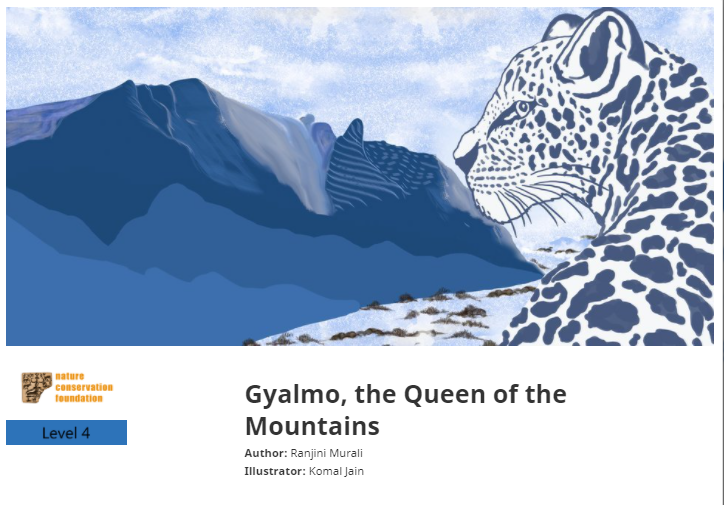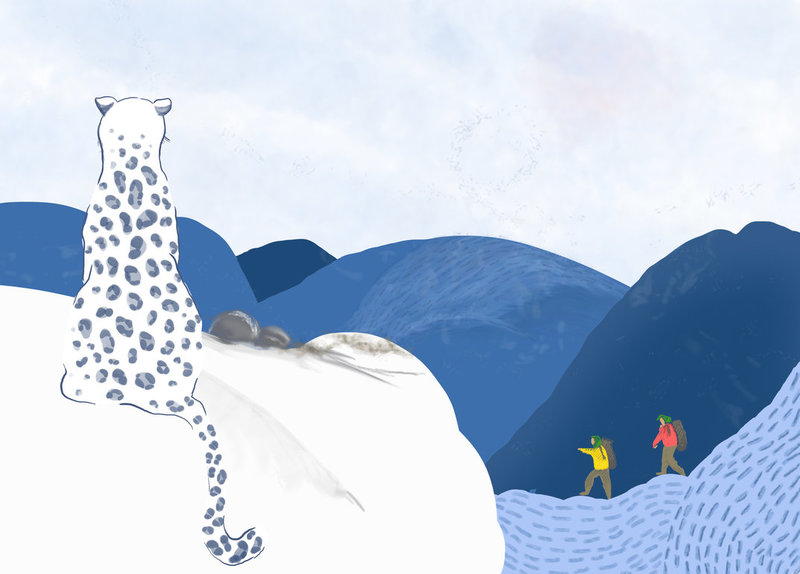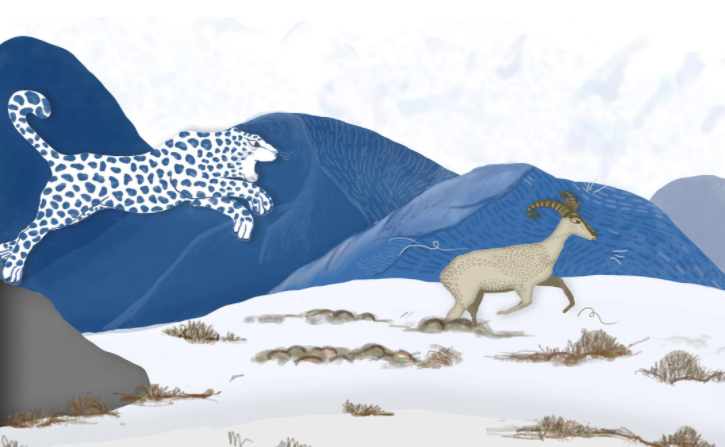We are looking for a Project Manager (Chhattisgarh) for StoryWeaver!
Posted by Julia M on October 01, 2021Duration - 6 months extendable up to 1 year
About Us
Pratham Books (www.prathambooks.org) is a not-for-profit children's book publisher that was set up in 2004 to publish good quality, affordable books in many Indian languages. Our mission is to see ‘a book in every child’s hand’ and we have spread the joy of reading to millions of children in India. As a publisher serving every child in India, Pratham Books has always pushed the boundaries when it comes to exploring innovative ways in which to create access to joyful stories and have been fortunate in finding partners to collaborate with who share this vision.
In 2015, Pratham Books increased its footprint by going digital. StoryWeaver (www.storyweaver.org.in)is a digital platform that hosts stories in languages from India and beyond so that every child can have an endless stream of stories in her mother tongue to read and enjoy. The stories can be read, translated, versioned, or downloaded for free. All stories on the platform are openly licensed.
We are looking for a Project Manager based out of Chhattisgarh who can spearhead a statewide campaign. The person is responsible to successfully implement the campaign and deliver on the KPIs while managing internal and external stakeholders.
An ideal candidate should have proven experience in campaign and project management.
Key Responsibilities:
As a Project Manager, you will manage the day-to-day communication and operational aspects of the project. Your core responsibilities will be to:
● Create and maintain detailed timelines/work plans for all project deliverables and key milestones; hold internal and external teams accountable to project plans.
● Serve as the primary point of contact for all operational questions about the project internally and externally
● Establish and nurture government relationships in the state education department to further the campaign outreach and impact
● Design and deliver campaign outreach initiatives in the state and ensure mobilization of resources at the ground level
● Identify stakeholders and attendees for crucial recurring and ad-hoc discussions; capture meeting notes and escalate communications to align on deliverables and troubleshoot roadblocks.
● Deliver project status updates to internal and external teams
● Undertake ad-hoc translation requests for short messages and social media posts.
● Support in preparing project launch, weekly check-ins, to identify and capture recommendations for future execution.
● Working closely with other team members to capture feedback throughout the project lifecycle and to contribute to the iteration of existing processes aimed at making project delivery more effective.
● Support the organization in monitoring and evaluation exercises
● Gathering and summarizing key takeaways for monthly project reports

Required skills and experiences:
● Minimum 2 years of experience in the education sector, project management or social media outreach campaigns
● Bachelors / Masters degree with relevant experience will be considered for the role
● Proven experience in project management, social campaigns, digital marketing campaigns and/ or project management preferably in the education sector
● Exceptional communication and project-management / organisational skills
● Proven ability to build consensus and work effectively within a cross-departmental team
● Excellent track record of time management, systems organization, and follow-up
● Agility and flexibility towards evolving responsibilities and last-minute project changes
● A confident facilitator to coordinate discussions between multiple internal stakeholders (such as an interdisciplinary team of different specialists across different geographies)
Language Skills:
Excellent proficiency in reading, writing and speaking Hindi. Additional knowledge of local languages of the state is desirable
Nice to have but not mandatory:
● Past experience in the education sector.
● Masters degree with past work experience in social sector organising and advocacy.
● Experience running lean campaigns that emphasize scaling of success, ideally within the education/social sector
● Willingness to travel around the state if required
Location: Raipur
Write to us:
Email your resume with the Project Manager (Chhattisgarh) -StoryWeaver in the subject line to [email protected]. Also, send us a short paragraph on why you think you are suitable for the position.
Father's Day Reads
Posted by Remya Padmadas on June 18, 2017Amrita Tripathy, Marketing and Communcations Manager at Pratham Books does a round up of her favourite stories starring Daddy dearest.
Call him Daddy, Appa, Baba, Acchan, Abbu, Babuji or Pitaji. He is strong. He is loving. He is the protector and nurturer. He is no less than a superhero. My ‘baba’ is my role model. I’m sure your father must be your idol too. This Father’s Day, we bring to you some of our interesting stories on this real-life superhero – father.

Anu and her love for moustaches- adapted from the original story by 'बाबाच्या मिश्या' (in Marathi) by Madhuri Purandare and translated by Jayashree Gopinath
Moustaches are so interesting and it becomes double intriguing when dads have it. Some have thick ones, while some have thin ones. There are many without one and some have long ones forming a beard. Our little Anu is in love with his daddy’s moustache! Actually, Anu likes anyone who has a moustache. No sooner has Anu seen a moustache and her mind brims with wonderful ideas. To know the ideas, read this interesting story.
Biju Spins Some Magic by Jaya Jaitly and Bhramara Nayak
Biju and his family are weavers in rural Odisha. They create beautiful fabrics and sell them in big cities in India and abroad. This is the tale of Biju’s adventures when he accompanies his father to Delhi to sell the saris, and in the process, impresses a city boy with his skill. With the traditional patachitra artwork, this story is truly a nostalgia of my childhood memories, of my homeland and those train journeys with baba. Not to ignore the Odisha handicrafts. A must read is what we suggest!
Cheenu's Gift by Sridala Swami and Suvidha Mistry
We all have waited eagerly in our school days for our dads to pick us from their busy schedule. Add to it, the joy of going around the city and helping dad get his works done. You never know when he gets happy with your help and gets you a surprise gift. Cheenu also gets a wonderful gift from his appa for being a good child.
DeeSy short stories 3 : Connecting the Dots... by Dr. Deepti S., Alicia Souza and Upamanyu Bhattacharyya
This wonderful short story showcases the importance of parents giving time to their kids in the midst of their busy schedule – office appointments, working on laptops and mobile phones and even on weekends and vacations. Sweet and impactful, this story says a lot about a father-son relationship in today’s time. So, why wait anymore! Let’s just connect the dots…
Raza Meets the King by Subhadra Sen Gupta and Tapas Guha
Who doesn’t love reading stories of Akbar, The Great? We all did. We all still do. Here’s a story from history when great Mughal King ruled the country where Raza's father Rahmat Khan is the royal tailor to the emperor. When they go to the palace to deliver the Emperor's new summer clothes, Raza realizes that the emperor is not completely satisfied with his father's designs. Raza wants desperately to help his father. But what can a little boy do? Find out.
Come Home, Papa by Apoorva Mathur, Hari Kumar Nair, Kabini Amin, Kaveri Gopalakrishnan, Soumya Menon, Vartika Sharma and Vishnu M Nair
What do you do when our father goes missing? Would you look for him? To whom will you turn for help? Read Vishakha's tale to unravel this mystery.
A girl with a lantern by Ravi Ranjan Goswami, Sonal Goyal, Sumit Sakhuja and Sumit Sakhuja
In the pitch-dark night, little Neelima goes in search of her dad. Did she manage to find him? Was she scared? Why did her dog bark? Know more.
Springloaded by Chenél Ferreira, Sam Wilson and Thea Nicole de Klerk
Neo’s father is an inventor. When he invents a helicopter hat and flies away, Neo decides to make an invention of her own. Like father, like son! A book with no words, just wonderful pictures that tell a beautiful story.
The Parrot with a Broken Beak adapted from ٹوٹی چونچ والا طوطا by Shahid Anwar, Shailja Jain Chougule and translated by Manisha Chaudhry
Her father's pen calls out to Kasni. Should she, or should she not pick it up? After she uses it, she finds an angry father and an angry parrot. A tale with charming colours to make any child happy! And for grown-ups, this story is a childhood memory. To know why, read the entire story.
The Magic Powder - A Folktale from Myanmar by Greystroke and P.G. Dinesh
Once upon a time, in a little village on the banks of the Irrawaddy river, there lived a young woman called Thuza. She was very happily married to handsome young Theingi. But there was one problem that nagged Thuza – her husband believed he would find a way to turn dirt into hold! Did he succeed? Read this delightful tale from Myanmar to find out.
So, what are waiting for. Celebrate this Father’s Day with us in our style.
Happy reading!
Be the first to comment.#WorldWildlifeDay: A conversation with the author of 'Gyalmo, the Queen of the Mountains'
Posted by Pallavi Kamath on March 04, 2021We are delighted to host books published by the Nature Conservation Foundation, and make them available for free under the CC BY 4.0 license on StoryWeaver. We hope that our community will enjoy reading & learning more about India's wildlfe through these stories, and that they will be translated into many more languages. The first 2 books resulting through this partnership are Gyalmo, the Queen of the Mountains and Birds That Sing Their Name.
In this post, we'll give you a closer look at the making of 'Gyalmo, Queen of the Mountains'!
About the book: Koyna and her friend Lobzang are in Spiti Valley, trying to spot the most elusive cat in the world, while Gyalmo, the snow leopard, watches from a distance as they try their best to see her. Written by Ranjini Murali and illustrated by Komal Jain.

Ranjini Murali, the author, is the Conservation Scientist at the Snow Leopard Trust. In this interview, she tells us about her fascination with the mountains and why she wrote a children's book about snow leopards.
Tell us why you chose to write about the mountains?
This story was first written for the 'Hindu in School' newspaper supplement which was meant for children studying in Bangalore and Chennai. I wrote this story then, as I wanted to introduce children to the fascinating animals of the Trans-Himalaya.
What is the message that you hope to share through these stories?
When I was a student in Bangalore, I didn't know there were snow leopards in India, nor did I know of these stunning landscapes or the amazing biodiversity present here. Maybe children now are more aware of this, but through this story, I hope to bring a bit more awareness to these landscapes.

Illustration by Komal Jain
What inspired you to conceptualize this story?
I've worked in the Trans-Himalaya for more than 10 years now and have never really seen a snow leopard! Part of this story was inspired by my constant search to see the snow leopard. The chase sequence was inspired by an video I had seen online of a snow leopard chasing a bharal!

Illustration by Komal Jain
How did you get to know about StoryWeaver, and what prompted you to make your story available on our platform?
I knew of the amazing work that StoryWeaver was doing, making reading accessible to children everywhere, so I jumped at the opportunity when a colleague reached out to me about plans of creating books on the platform. I especially love how the stories on the platform are accompanied by amazing illustrations. I was so excited to see this story come alive through the illustrations! I also like that the stories are available to be translated, so they are accessible to more children around India.
Read Gyalmo, the Queen of the Mountains